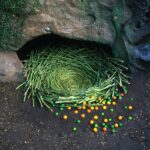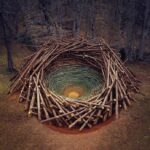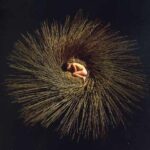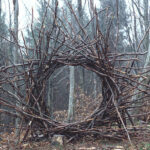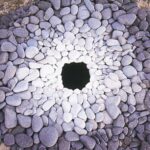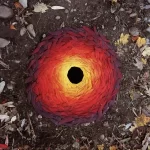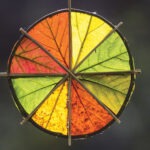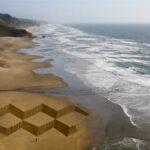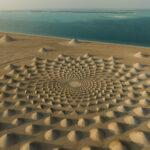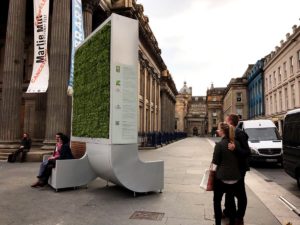
Ephemeral art is a work of art that only lasts for a short amount of time, perhaps occurs once, like a happening, and cannot be embodied in any lasting object. It also cannot be preserved by a museum gallery as a lasting object. It is also known as temporary art. Ephemeral art can take many forms, including sculpture, performance, and sound art. Ephemeral art first came to prominence in the 1960s with the Fluxus group, when artists like Joseph Beuys were interested in creating works of art that existed outside the gallery and museum structure and had no financial worth. Happenings, performances, and sound sculptures are all part of ephemeral art. Ephemeral art is made with natural materials that are at hand. The artist constructs the sculpture anonymously and then walks away to leave the piece to be discovered. Part of the appeal of ephemeral art is that the viewer accidentally stumbles upon the art, and is left to wonder who made it and why.
Here are some examples of ephemeral art:
- Happenings: These were theatrical events created by artists in the late 1950s and early 1960s. They were designed to be spontaneous and unscripted, with the audience often participating in the performance. Think Dance Mob.
- Sand Sculptures: These are sculptures made from sand that are often created on beaches or in other outdoor locations. They can be quite intricate and detailed, but they are also very fragile and can be destroyed by wind or rain.
- Chalk Drawings: These are drawings made on sidewalks or other outdoor surfaces using chalk. They can be quite large and colorful, but they are also very temporary and will eventually be washed away by rain or traffic.
- Natural Arrangements: These arrangements of flowers, leaves, sticks, and moss are often created for a viewer to accidentally discover their existence. They can be quite elaborate and beautiful, but they are also very temporary.
Some notable artists who have contributed to this movement include:
Nils-Udo: A German artist who celebrates the beauty of nature by working with found materials such as leaves and branches to create stunning, site-specific works. He's known for creating "utopias" that transform the land into mysterious, dreamlike realms. In his works, there is a constant: the nests, which, for him, represent the beginning and the end of procreation.
Andy Goldsworthy: A British sculptor, photographer, and environmentalist who is known for his site-specific land art made from natural, found materials. He crafts his installations out of rocks, ice, leaves, or branches, then carefully documents how the ephemeral installations change and wither over time.
Richard Shilling: A British artist inspired by the work of Goldsworthy who uses natural materials gathered from the environment to create outdoor sculptural installations. His most recognizable works include his stained glass-like sculptures made from colorful leaves and his stacked rock totems.
Jim Denevan: The passion for sand drawing (and land art) came to him when surfing. He realized how the beaches were empty canvas, and felt the appeal to fill the void. His creations usually last a few hours before being washed away by the tides.
